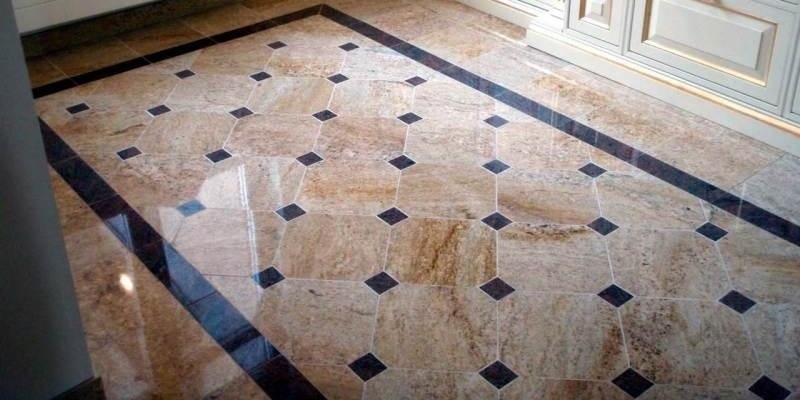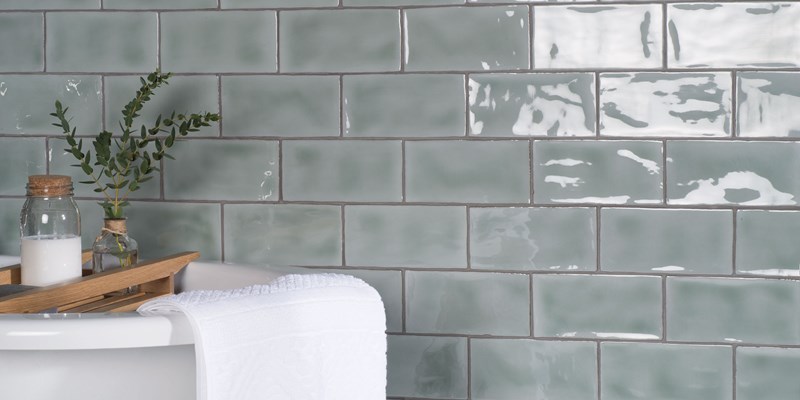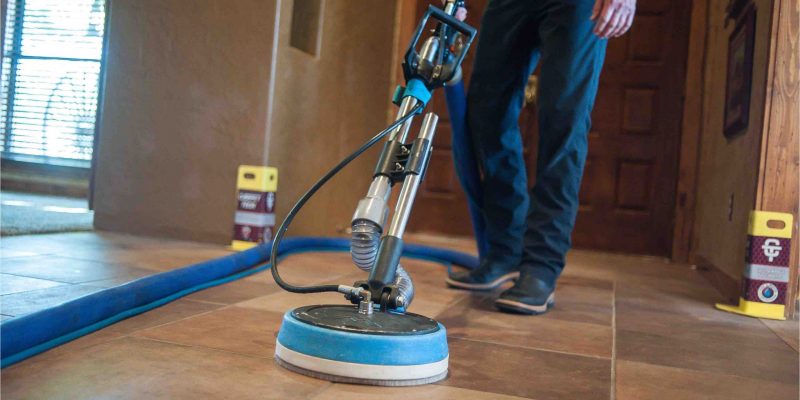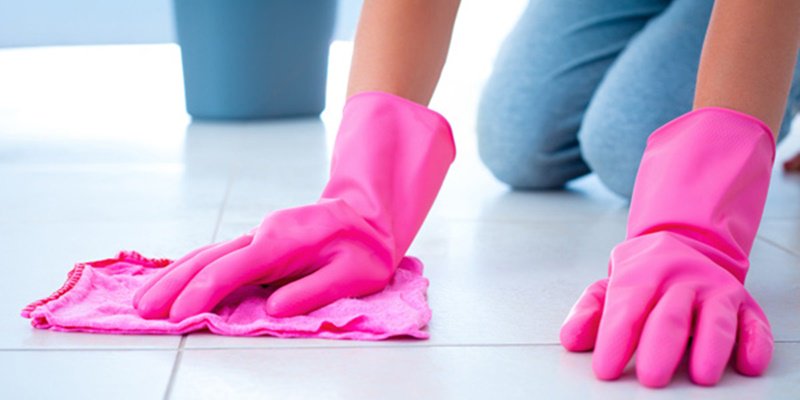The characteristics of ceramic tiles which could be distinguished from one another is the resilience of each tile and its resistance to mechanical, thermal and chemical stresses in the environment. As the amount of stress that tiles can withstand in a workshop or factory environment is very different from that of the entrance of the house. In addition, bathroom tiles are in direct contact with detergents. Kitchen tiles are exposed to heat, moisture and grease, and complex entrance tiles are subject to constant wear and tear. Therefore, suitable tiles for each must be produced with a certain quality. Bathroom tiles requires to be highly resistant to chemicals, especially acids and bases. If you decide to use ceramic tiles for the floor, look for the desirable type. The water absorption of bathroom floor tile has to be less than 7% and its coefficient of friction-wear ought to be higher than 60 degrees and it must be resistant to slipping. Here, we suggest you to pick up the different types of flooring ceramic tiles which have two main benefits: first, it is easy to wash and observe their hygiene in the bathroom. On the other hand, these types of flooring ceramic tiles have a longer life in a wet and humid bathroom environment and can maintain their color, appearance and composition for many years. These ceramic tiles will guarantee the beauty of your bathroom. Be sure to use rustic ceramic tile. Because this type of ceramic tile provides more safety in the bathroom and their grooves prevent you from slipping there.  Choosing the best type of tile for the kitchen is very significant. Because you should look for a tile that, in addition to resisting heat, moisture and grease, should have a beautiful color and unique design which is up to your taste and the style of your home, as well as the amount of money you can pay for tiling your home. So to choose tiles, in addition to the dimensions and size, make sure to consider the design and color of the tiles. it is better that these items are in harmony with the rest of the appliances in your kitchen, otherwise if the tiles are flooring the kitchen and other parts are inconsistent, It creates a very crowded and messy environment in your kitchen. What is used these days for kitchen flooring ceramic tile is known as porcelain. Porcelain is a type of ceramic product that originates from the mineral kaolinite. One of the characteristics of porcelain tile is its water absorption power, which has less water absorption compared to other ceramic tiles. The compact and dense structure of porcelain tiles creates the highest amount of resistance among floor and wall tiles. Also, porcelain ceramic tiles are extremely resistant to frost, heat shock and chemical agents. In the past, porcelain tiles were used exclusively in industrial places, but today these ceramic tiles are used everywhere.
Choosing the best type of tile for the kitchen is very significant. Because you should look for a tile that, in addition to resisting heat, moisture and grease, should have a beautiful color and unique design which is up to your taste and the style of your home, as well as the amount of money you can pay for tiling your home. So to choose tiles, in addition to the dimensions and size, make sure to consider the design and color of the tiles. it is better that these items are in harmony with the rest of the appliances in your kitchen, otherwise if the tiles are flooring the kitchen and other parts are inconsistent, It creates a very crowded and messy environment in your kitchen. What is used these days for kitchen flooring ceramic tile is known as porcelain. Porcelain is a type of ceramic product that originates from the mineral kaolinite. One of the characteristics of porcelain tile is its water absorption power, which has less water absorption compared to other ceramic tiles. The compact and dense structure of porcelain tiles creates the highest amount of resistance among floor and wall tiles. Also, porcelain ceramic tiles are extremely resistant to frost, heat shock and chemical agents. In the past, porcelain tiles were used exclusively in industrial places, but today these ceramic tiles are used everywhere. 
Appropriate Characteristics of Ceramic Tiles
The appropriate characteristics is the grade of ceramic tile. The first grade is the best quality, the second grade is similar to the first grade, but the price is a bit cheaper. First grade and second grade are suitable for the floor. The third grade tile is not strong enough to walk on and is mostly used on the wall. Floor tiles can be used on the wall, but wall tiles can not be used as a floor ceramic tiles. Be sure to note that the tiles you lay on the floor are at least second grade. The second classification is called the PEI classification. PEI rates the ability of a glossy tile to withstand abrasion and its durability as a floor tile. Only glossy tiles have AA grade, and if you want to buy non-glossy tiles you will not find such a rating on the label.  Another important classification that you should pay attention to when buying tiles is the amount of water absorption or so-called WA of ceramic tiles. The type of tile determines whether the tile is suitable for use in wet areas or outdoor spaces. The third important rating is the coefficient of friction and its abbreviation is C.O.F, which refers to the natural resistance of the tile to slipping. The higher the amount, the less friction the floor is covered with this tile, and if the amount is low, it means the floor is slippery. There is another category, which tell us whether the ceramic tile is capable of withstanding the cold outside. This rating is not significant if you want to use the desired ceramic tile indoors. The final classification is multicolor. Multicolored tiles are used only when we want the tiles stacked together to have a variety of colors and look like natural stone. If you are looking for tiles with strong and stable colors, this type of tile will not be suitable for your work. This classification is suitable for those who like each tile to have a unique color
Another important classification that you should pay attention to when buying tiles is the amount of water absorption or so-called WA of ceramic tiles. The type of tile determines whether the tile is suitable for use in wet areas or outdoor spaces. The third important rating is the coefficient of friction and its abbreviation is C.O.F, which refers to the natural resistance of the tile to slipping. The higher the amount, the less friction the floor is covered with this tile, and if the amount is low, it means the floor is slippery. There is another category, which tell us whether the ceramic tile is capable of withstanding the cold outside. This rating is not significant if you want to use the desired ceramic tile indoors. The final classification is multicolor. Multicolored tiles are used only when we want the tiles stacked together to have a variety of colors and look like natural stone. If you are looking for tiles with strong and stable colors, this type of tile will not be suitable for your work. This classification is suitable for those who like each tile to have a unique color 
Chemical Properties of Ceramic Tiles
The next step is to examine the ceramic tiles for its chemical properties. Resistance to corrosion or contaminants is required for tiles these properties include resistance to contamination, chemicals, acids and bases. For instance, ceramic tiles used in kitchens, bathrooms and toilets must be resistant to detergents so that the surface quality of these ceramic tiles is not damaged by exposure to detergents. This is especially important for tiles used in industrial areas and hospitals. Porcelain ceramic tiles with a polished surface except for HF have a high resistance to chemicals. Since ceramic tiles are generally neutral and insoluble and in contact with water and major chemicals other than hydraulic acid, which can dissolve them, they have no special effect and therefore it can be easy to clean.  Nowadays, factories produce ceramic tiles called anti-acid tiles. These types of ceramic tiles are highly resistant to contact with acidic chemicals. In fact, an industrial factory may use acidic materials several times, and if the wall or floor of this factory is not made of anti-acid ceramic tiles, it may simply break down and rot. Most cases of using anti-acid ceramic tiles are in places such as industrial factories, dairy and food factories, ponds containing acidic substances and so on. Another feature of anti-acid ceramics is that it can be easily washed. In addition, it should be noted that the surface of anti-acid ceramics is not slippery and therefore provides safety when it is noticeable and of course anti-acid ceramics tiles are most often used for environments where heavy vehicles are moving. Because they can withstand a lot of pressure.
Nowadays, factories produce ceramic tiles called anti-acid tiles. These types of ceramic tiles are highly resistant to contact with acidic chemicals. In fact, an industrial factory may use acidic materials several times, and if the wall or floor of this factory is not made of anti-acid ceramic tiles, it may simply break down and rot. Most cases of using anti-acid ceramic tiles are in places such as industrial factories, dairy and food factories, ponds containing acidic substances and so on. Another feature of anti-acid ceramics is that it can be easily washed. In addition, it should be noted that the surface of anti-acid ceramics is not slippery and therefore provides safety when it is noticeable and of course anti-acid ceramics tiles are most often used for environments where heavy vehicles are moving. Because they can withstand a lot of pressure. 
Physical Properties of Ceramic Tiles
Properties of ceramic tiles are generally divided into two categories in terms of physical feature: first, mechanical properties and second, surface properties. The mechanical properties of each substance tells the usage of it to us. One of the main properties of ceramic tiles is their strength, which can be measured in different ways. Resistance to forces such as the weight of people and equipment placed on the ceramic tile is one of the parameters that must be considered in the study of mechanical properties of the ceramic tiles. Ceramic tiles are always tested in this regard by the MOR test. The higher the porosity of the tile, the lower the resistance to tile failure. Surface properties includes Scratch resistance. The resistance to what happens when people or objects come in contact with the tile surface. These specifications are especially important for floor tiles because people always pass through it and household items such as tables and chairs are placed on it.  For example, there are tiles that part of their design disappear over time. The factor that affects the scratch resistance is the surface hardness, which is actually the wear and scratch resistance factor. If the tile has a suitable coating for public environments, it will not be damaged by traffic. There are suitable ceramic tiles for any environment, but this does not mean that all ceramic tiles can be used in any environment and conditions. Choosing the accurate ceramic tile allows them to working well when used. Our product managers will help you find the most suitable and modern tile for your interior design and your budget.
For example, there are tiles that part of their design disappear over time. The factor that affects the scratch resistance is the surface hardness, which is actually the wear and scratch resistance factor. If the tile has a suitable coating for public environments, it will not be damaged by traffic. There are suitable ceramic tiles for any environment, but this does not mean that all ceramic tiles can be used in any environment and conditions. Choosing the accurate ceramic tile allows them to working well when used. Our product managers will help you find the most suitable and modern tile for your interior design and your budget.

0
0